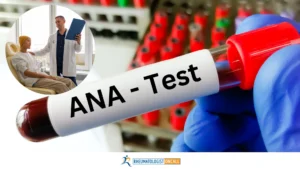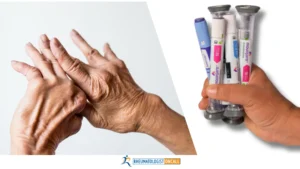SHARE
Psoriatic arthritis is a chronic autoimmune disease that affects around 30% of people with psoriasis. It causes joint pain, stiffness, and swelling, and can lead to joint damage if left untreated. Unfortunately, diagnosing psoriatic arthritis can be difficult because it shares symptoms with other types of arthritis.
In this article, we’ll discuss the 7 most common signs of psoriatic arthritis and why it can be hard to diagnose.
Sign #1: Joint Pain and Stiffness
Joint pain and stiffness are the most common symptoms of psoriatic arthritis. This pain can be in one or more joints and may be worse in the morning or after a period of inactivity. The joints may also feel swollen and warm to the touch.
Sign #2: Nail Changes
Psoriatic arthritis can also cause changes to the nails, such as pitting, discoloration, and separation from the nail bed. These changes can occur in both the fingernails and toenails.
Sign #3: Skin Rashes
Psoriasis is a skin condition that often precedes psoriatic arthritis. The rash can appear as red, scaly patches that may be itchy or painful. The rash can occur anywhere on the body, but is most common on the scalp, elbows, and knees.
Sign #4: Tendon issues
Achilles tendonitis, elbow tendonitis, and plantar fasciitis are common tendon issues that can occur in people with PsA. Achilles tendonitis is inflammation of the tendon that connects the calf muscles to the heel bone. It can cause pain, stiffness, and swelling in the back of the ankle.
Elbow tendonitis is inflammation of the tendons that attach to the elbow joint, causing pain and stiffness in the elbow. Plantar fasciitis is inflammation of the tissue that runs along the bottom of the foot, causing pain in the heel and arch of the foot.issues
Sign #5: Eye Problems
Psoriatic arthritis can also cause eye inflammation, leading to redness, pain, and blurred vision. This condition, called uveitis, requires immediate medical attention to prevent permanent eye damage.

Sign #6: Swollen Fingers and Toes
Psoriatic arthritis can cause swelling in the fingers and toes, known as dactylitis. This swelling can make it difficult to grip objects or wear shoes.
Sign #7: Lower Back Pain
Lower back pain is a common symptom of many types of arthritis, but it is especially common in people with psoriatic arthritis. This pain can be severe and worse in the morning or after inactivity.
Why is Psoriatic Arthritis Hard to Diagnose?
Psoriatic arthritis can be challenging to diagnose because it shares symptoms with other types of arthritis, such as rheumatoid arthritis and osteoarthritis. Additionally, psoriatic arthritis can have a wide range of symptoms, making it challenging to identify. Some people with psoriatic arthritis may only have mild symptoms, while others may have severe joint damage. See a rheumatologist if you have any symptoms of psoriatic arthritis, as early diagnosis and treatment can prevent joint damage and improve quality of life.

How to diagnose Psoriatic Arthritis?
Diagnosing psoriatic arthritis can be challenging as its symptoms can be similar to other forms of arthritis. It is usually diagnosed by a rheumatologist, who specializes in the diagnosis and treatment of rheumatic diseases.
The diagnosis of psoriatic arthritis is made based on a combination of clinical examination, medical history, and imaging tests. Here are some of the diagnostic criteria for psoriatic arthritis:
Physical examination: The rheumatologist will examine your joints for any signs of inflammation, swelling, or tenderness. They will also look for psoriasis on the skin or nails, which is a common sign of psoriatic arthritis.
Medical history: Your rheumatologist will ask you questions about your medical history, including any family history of psoriasis or psoriatic arthritis, any previous joint injuries, and your lifestyle habits.
Imaging tests: X-rays, MRI, and ultrasound can be used to examine the joints for signs of inflammation and damage.
Blood tests: Blood tests can be used to rule out other forms of arthritis, such as rheumatoid arthritis, and to look for markers of inflammation.
Joint fluid analysis: If the diagnosis is unclear, your rheumatologist may remove a small sample of fluid from the affected joint for analysis.
It’s important to note that not all people with psoriatic arthritis will have visible signs of psoriasis. In some cases, joint pain and inflammation may be the first symptoms of the disease. Therefore, it’s essential to seek medical attention if you’re experiencing joint pain, stiffness, or swelling, especially if you have a personal or family history of psoriasis or psoriatic arthritis. Early diagnosis and treatment can help manage the symptoms and prevent long-term joint damage.
In conclusion, psoriatic arthritis is a chronic autoimmune disease that can be difficult to diagnose due to its varied symptoms. The seven most common signs of psoriatic arthritis are joint pain and stiffness, nail changes, skin rashes, fatigue, eye problems, swollen fingers and toes, and lower back pain. If you experience any of these symptoms, seeing a rheumatologist for a proper diagnosis and treatment plan is essential.














